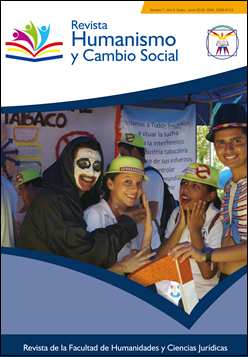Reflections on Nicaraguan trade unionism (1970-2015)
DOI:
https://doi.org/10.5377/hcs.v0i7.3506Keywords:
Labor movement, Popular Sandinista Revolution, Women’s Movement of the maquilas, Confederation of self-employedAbstract
The Nicaraguan labor movement during the period 1970, to the present despite political situation has played an important role in the history of national. This paper aims to recount this movement in recent times. During the research period the labor movement taking advantage of structural opportunities has led strikes, armed actions, alliances, negotiations in order to make their presence felt on the national political scene. One of the characteristics of this social movement is that their collective action consolidates in periods of social, political and economic crisis. To achieve social and political rights: freedom of association, social security, working hours, among others, is one of the great contributions of of syndicalism to the Nicaraguan contemporary history. With the electoral defeat of the FSLN in 1990, the opportunity structures changed, and thus the repertoires of confrontation. In this new scenario alliances, negotiations and strikes occurred as well as a weakening of the trade union movement due to the structural adjustment policies of that period. Thus, innovative expressions of unionism are given: Confederation of self-employed, and the Women’s Movement of the maquilas, important in the recent history of syndicalism, thereby presenting new forms of collective action in a new context of national reality.
Revista Humanismo y Cambio Social. Número 7. Año 3. Enero - Junio 2016: 20-27
Downloads
References
Aya, R. (1990). Rethinking Revolutions and Collective Violence. Studies on Concept, Theory, and Method. Amsterdam: Het Spinhuis.
Bobbio, N. (1996). Derecha e izquierda: razones y significados de una distinción política. Madrid: Taurus.
Centro de Análisis Sociocultural (2015). Movimientos Sociales y Acción colectiva en Nicaragua. Managua. Autor.
Guevara, O. (2008). Cien años del Movimiento Social en Nicaragua: relato cronológico. Managua: Instituto de Historia de Nicaragua y Centroamérica.
Gutiérrez, G. (1985). Historia del movimiento obrero en Nicaragua (1900-1977). En P. González-Casanova. (Coord.), Historia del movimiento obrero en América Latina. México: Siglo Veintiuno Editores (pp. 196-252). México: Siglo XXI.
Middlebrook, K. & Guerrero, M. (1997). Movimiento obrero y democratización regímenes posrevolucionarios: las políticas de transición en Nicaragua, Rusia y México. Foro Internacional, 365-407.
McAdam, D., Tarrow, S. y Tilly, C. (2005). Dinámica de la contienda política. Barcelona, Editorial Hacer.
Núñez, O. (2011). La economía social solidaria en las naciones proletarizadas y el proletariado por cuenta propia en la transformación del sistema. Managua: Consejo Latinoamericano de Ciencias Sociales & Centro Interuniversitario de Estudios Latinoamericanos y Caribeños.
Rovira, J. (2009). Nicaragua 1979-2007. Transición a la democracia y perspectivas de su consolidación. Encuentro, 82, 6-24.
Stahler-Sholk, R. (1994). El ajuste neoliberal y sus opciones: la respuesta del movimiento sindical nicaragüense. Revista Mexicana de Sociología, 56(3), 59-88.
Sautu, R., Boniolo, P., Dalle, P. & Elbert, R. (2005). Manual de metodología. Construcción del marco teórico, formulación de los objetivos y elección de la metodología. Buenos Aires: Consejo Latinoamericano de Ciencias Sociales.
Tarrow, S. (1997). El poder en movimiento. Los movimientos sociales, la acción colectiva y la política. Madrid: Alianza Editorial.
Tilly, C. (2007). La violencia colectiva. Barcelona: Editorial Hacer.
Torres, E & Gomariz,E. (2007). ¿Qué significa ser de izquierda? Costa Rica: Facultad Latinoamericana de Ciencias Sociales.
Vilas. C. (1987) La Revolución Sandinista. Buenos Aires: Legasa.




